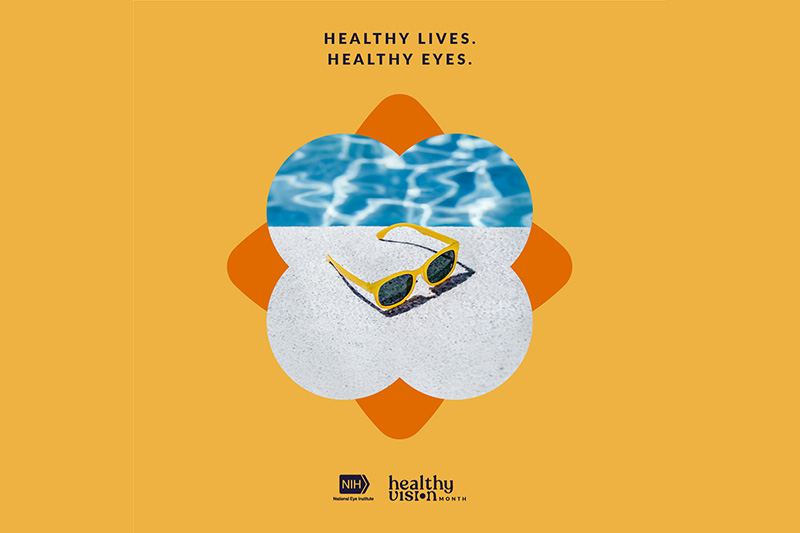From deciphering tiny print to maintaining eye contact during a conversation, our vision plays a major role in how we interact with the world around us. Now imagine navigating through life with reduced vision. Whether from conditions present from birth like Albinism, Nystagmus, Achromatopsia, or developmental issues, or acquired later in life in the form of macular degeneration, diabetes, or glaucoma, the experience shifts dramatically. Suddenly, tasks that were once simple become challenging puzzles to solve. Addressing these challenges requires comprehensive approaches that encompass both traditional and innovative solutions.
What is Low Vision?
Low vision describes a visual impairment that can’t be corrected with glasses, contacts, surgery, or medication. It’s like having a persistent blur or a loss of one’s side vision that refuses to go away. For those living with low vision, even simple tasks become daunting hurdles. Walking, driving, reading, recognizing faces, watching TV, or using a computer—these everyday activities can all become sources of frustration and difficulty.
According to the World Health Organization, a staggering 2.2 billion people worldwide either struggle with blindness or face vision impairment, including what’s known as low vision. In the United States alone, approximately 12 million people aged 40 and over live with a visual impairment—a significant portion of the population dealing with challenges that can impact their daily lives in profound ways.
Read on to learn more about low vision and how low vision aids and modern technology can help alleviate many of the challenges related to living with low vision.
Low Vision Aids
Modern low vision aid technology is making it easier than ever to live with low vision. Think bioptic glasses that work like binoculars, or smart glasses with digital displays that can zoom and enhance visibility. These innovations aren’t just gadgets; they’re lifelines, helping people with reduced vision reclaim their independence and connection to the world.
Improving Reading and Comprehension
One of the major challenges individuals with reduced vision face often relates to reading. Low vision aids, including conventional optical magnifiers, special high-powered eyeglasses, computer software, and newer digital technologies accessible from smartphones, offer many excellent ways to magnify print and make it easier to read. In addition, there are alternatives to reading, such as audiobooks, MP3 players, and text-to-speech apps, that can help individuals access information without straining their vision.
Enhancing Accessibility and Social Well-Being
Vision isn’t just about helping us read and see things. It’s an essential social sense that helps us connect with the world around us. Losing that connection can lead to feelings of isolation and even contribute to depression. Studies show that a lack of visual engagement in social settings and visually-guided activities can even contribute to cognitive decline. Thankfully, low vision technology can help alleviate many of the social and day-to-day seeing challenges that individuals with reduced vision may face.
Navigating Low Vision
As we continue to advocate for better insurance coverage and support for low vision evaluations, care and vision aids, it’s important to remember that investing in these tools isn’t just about spending money—it’s about investing in a better quality of life. From school to work to retirement, low vision aids can make a world of difference, empowering individuals to live life on their terms.
The American Academy of Ophthalmology (AAO), in their Preferred Practice Patterns, emphasizes the importance of referrals for low vision care for all individuals with reduced vision. The Vision Council underscores the necessity of two eye doctors for individuals with reduced vision—their medical eye doctor, usually an ophthalmologist, and a low vision doctor, either an optometrist or an ophthalmologist, who will help maximize the individual’s vision by prescribing low vision aids. Additionally, The Vision Council Foundation’s Low Vision website provides a Low Vision Prescriber Network listing, enabling individuals to locate low vision specialists conveniently.
Efforts are underway to improve access to low vision services and aids. A coalition has been formed by organizations and agencies supporting the visually impaired to lobby Congress and Medicare for coverage of low vision aids. As these efforts progress, individuals who are visually impaired or parents of visually impaired children should consider acquiring low vision aids as an investment in enhancing their lives, as these aids can dramatically impact various aspects of life—from schooling and careers to social interactions and retirement years.
Low vision isn’t just about not seeing well; it’s about navigating a world that’s designed for those with normal vision. And that’s where the journey begins for many individuals living with this condition—finding ways to thrive in a world that often overlooks their needs.






